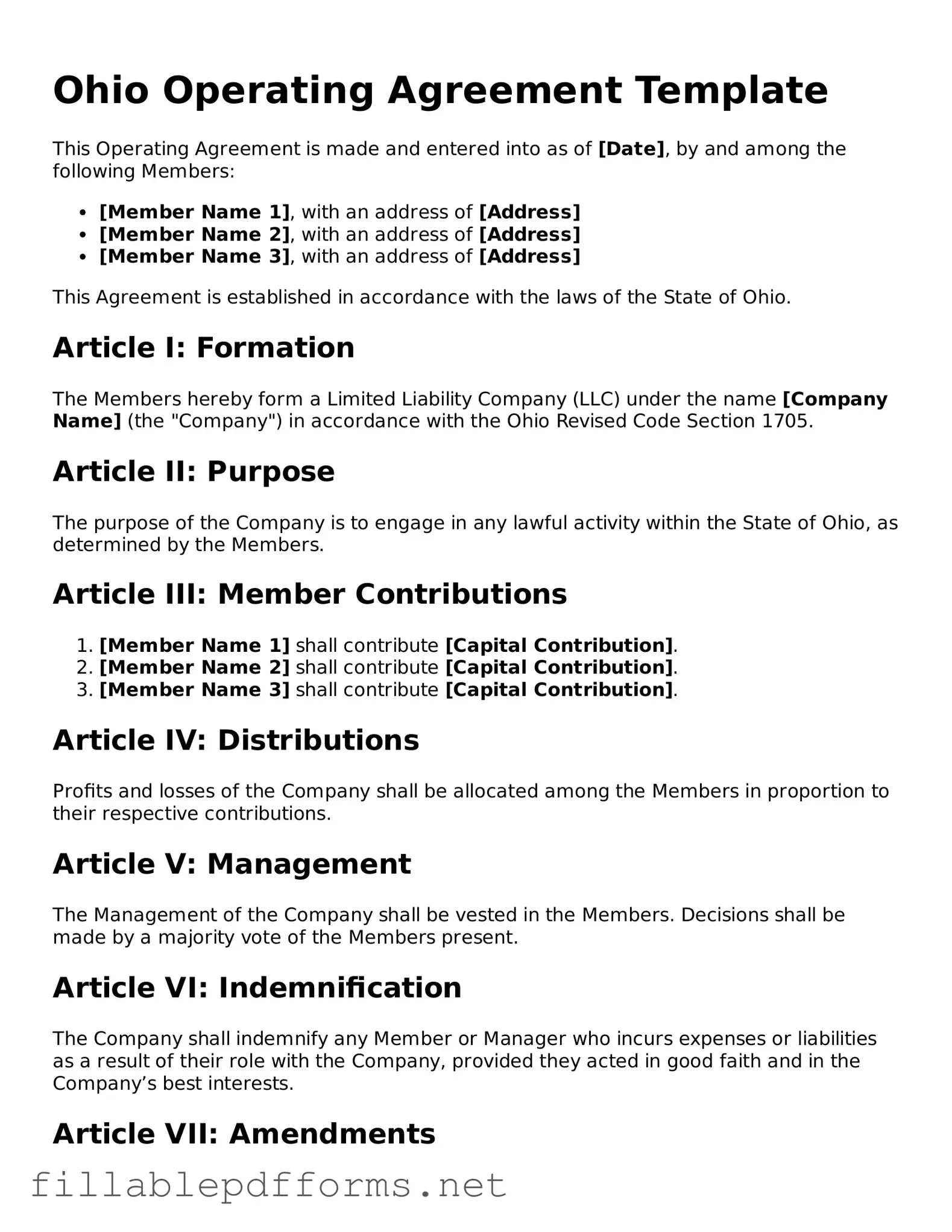When it comes to the Ohio Operating Agreement form, there are several misconceptions that people often have. Understanding these can help ensure that business owners are well-informed about their responsibilities and the nature of this important document.
- Misconception 1: An Operating Agreement is not necessary for LLCs in Ohio.
Many people believe that an Operating Agreement is optional for Limited Liability Companies (LLCs) in Ohio. However, while it is not legally required, having one is highly recommended as it outlines the management structure and operating procedures of the LLC.
- Misconception 2: The Operating Agreement must be filed with the state.
Some individuals think that the Operating Agreement needs to be submitted to the Ohio Secretary of State. In reality, this document is kept internally and does not need to be filed, although it should be readily available for reference.
- Misconception 3: All members must agree on every aspect of the Operating Agreement.
It is a common belief that unanimous consent is required for every provision in the Operating Agreement. While it is ideal to have consensus, the agreement can include provisions that allow for majority decisions, making it flexible for member participation.
- Misconception 4: The Operating Agreement is a one-time document.
Some people think that once the Operating Agreement is created, it never needs to change. In fact, as the business evolves, it may be necessary to update the agreement to reflect changes in membership, management, or operations.
- Misconception 5: The Operating Agreement is the same as the Articles of Organization.
Many confuse the Operating Agreement with the Articles of Organization. The Articles of Organization are filed with the state to officially create the LLC, while the Operating Agreement is an internal document that governs the LLC's operations.
- Misconception 6: An Operating Agreement is only for multi-member LLCs.
It is a common myth that only LLCs with multiple members need an Operating Agreement. Single-member LLCs can also benefit from having one, as it helps establish credibility and provides a clear structure for the business.
- Misconception 7: The Operating Agreement can be verbal.
Some believe that a verbal agreement is sufficient for an LLC's operations. However, to avoid misunderstandings and disputes, it is essential to have a written Operating Agreement that clearly outlines the terms agreed upon by the members.
- Misconception 8: The Operating Agreement can be overly simplistic.
There is a notion that a brief and simple Operating Agreement is adequate. While it can be straightforward, it should also be comprehensive enough to cover essential aspects like management structure, profit distribution, and procedures for adding or removing members.
- Misconception 9: Legal assistance is not needed to create an Operating Agreement.
Some people think they can create an Operating Agreement without any legal help. While it is possible to draft one independently, consulting with a legal professional can ensure that the document meets all necessary requirements and addresses specific business needs.
